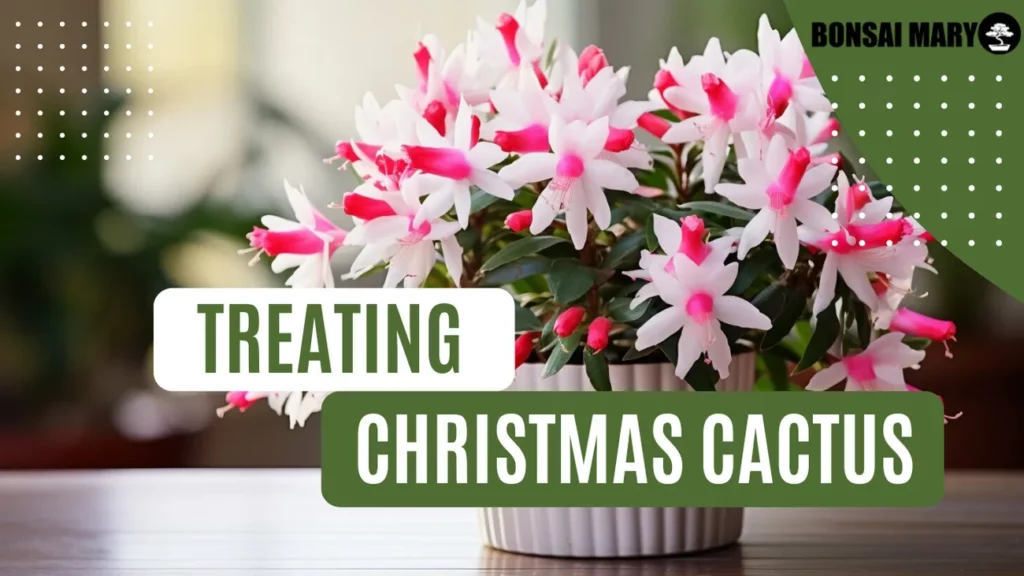To control pests and diseases in Christmas Cactus, ensure good cultural practices, isolate new plants, use insecticidal soaps or neem oil for pests, and remove affected parts promptly while maintaining proper watering, lighting, and air circulation to prevent future outbreaks.
This guide explores identifying and treating common pests and diseases in Christmas cacti, offering strategies to protect and maintain their health.
Learn about proactive care, from managing infestations and diseases like root rot, leaf spot, and stem rot, to essential practices such as proper watering, pruning, and propagating. Gain insights to avoid mistakes and implement expert tips for a vibrant, thriving Christmas cactus.
No products found.
Identifying Common Pests on Christmas Cactus
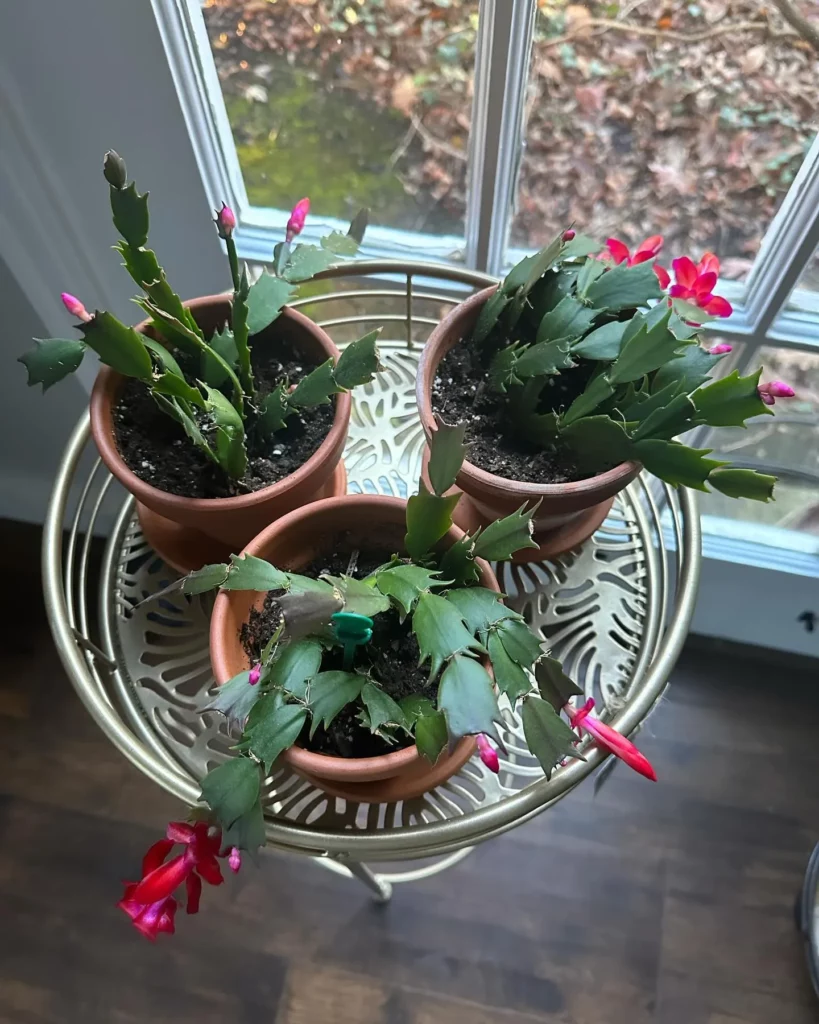
Keeping your Christmas cactus healthy and vibrant requires vigilance when it comes to pest control. By learning how to identify common pests that can infest your Christmas cactus, you can take early action to protect your beloved plant.
Here, we will discuss some of the most common pests that may target your Christmas cactus and how to spot their signs and symptoms.
Pests like aphids, mealybugs, and spider mites can wreak havoc on your Christmas cactus if left untreated. Aphids are small, pear-shaped insects that suck sap from your plant’s leaves, causing them to curl and distort.
Mealybugs, on the other hand, appear as cottony clusters and feed on the plant’s sap. They often leave behind a sticky residue called honeydew, which can attract ants. Spider mites are tiny pests that create webs on the plant’s leaves, causing them to develop yellow spots and eventually drop.
When inspecting your Christmas cactus for pest infestations, keep an eye out for sticky residue, discolored or wilted leaves, distorted growth, and visible pests. Use a magnifying glass if needed to get a closer look at the leaves, stems, and flowers.
Treating Pest Infestations on Christmas Cactus
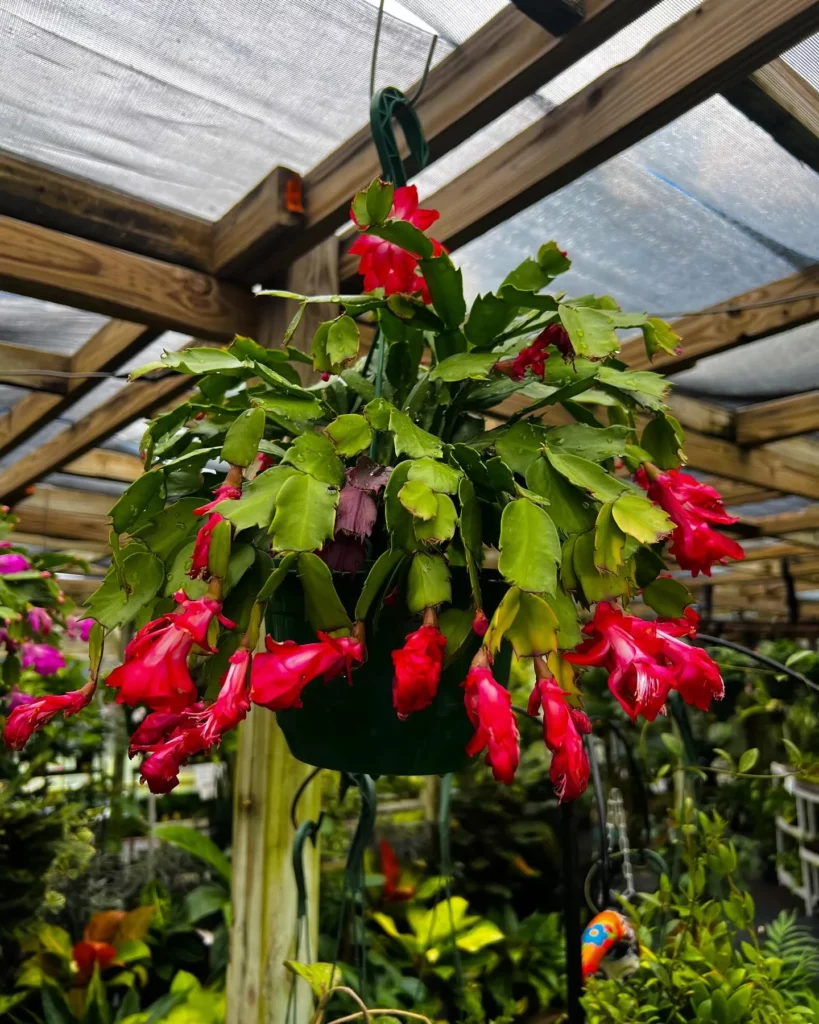
Have you noticed pest infestations on your beloved Christmas cactus? Don’t worry, we’ve got you covered.
Organic and Chemical Treatment Options
When it comes to treating pest infestations on your Christmas cactus, you have a variety of options to choose from. Organic treatments are gentle on your plant and safer for indoor use, making them ideal for those who prefer natural solutions.
One effective organic method is using a solution made from neem oil, which acts as a natural insecticide. Dilute the neem oil according to the instructions and spray it on your Christmas cactus, targeting the pests directly.
If you prefer a chemical approach, you can use commercially available insecticidal soaps or horticultural oils.
These products effectively control pests and can be found in most garden centers. Follow the package instructions carefully to ensure safe and proper application.
Preventive Measures
Prevention is key to keeping your Christmas cactus free from future pest infestations. Here are some preventive measures you can take:
- Regularly inspect your plant: Regularly check the leaves and stems of your Christmas cactus for any signs of pests. Early detection can prevent infestations from spreading and causing extensive damage.
- Quarantine new plants: If you bring home a new plant, keep it separate from your other Christmas cacti for a few weeks. This will allow you to observe it closely for any signs of pests before introducing it to your existing collection.
- Maintain good plant hygiene: Cleanliness is essential in preventing pest infestations. Remove any fallen leaves or debris from the soil surface, as these can attract pests.
- Avoid overwatering: Keeping your Christmas cactus in well-draining soil and avoiding overwatering can help deter pests that thrive in moist environments.
Preventing Common Diseases in Christmas Cactus

To keep your Christmas cactus thriving and disease-free, it’s important to take preventive measures. By following proper care techniques and implementing a few simple strategies, you can protect your plant from common diseases like root rot, leaf spot, and stem rot.
Proper Watering Techniques
One of the key factors in preventing diseases is regulating the moisture levels in your Christmas cactus. Overwatering can lead to root rot, while underwatering can cause stress and make the plant susceptible to diseases.
To prevent overwatering, ensure that the soil is well-drained and never let the plant sit in standing water. On the other hand, make sure to water the plant thoroughly when the soil is dry, but avoid letting it dry out completely.
Temperature Control
Christmas cacti prefer moderate temperatures, and extreme heat or cold can weaken the plant’s immune system and invite diseases.
Avoid exposing your cactus to sudden temperature changes or placing it near drafts, heating vents, or air conditioning units. Maintaining a consistent temperature between 60-70°F (15-21°C) will create an ideal growing environment and help prevent diseases.
Pest Control
Pests can often carry diseases and infect your Christmas cactus. To prevent pest infestations, regularly inspect your plant for signs of aphids, mealybugs, or spider mites.
If you notice any pests, take immediate action by removing them manually or using natural pest control methods such as neem oil or insecticidal soap.
Proper Ventilation
Good air circulation is essential for preventing diseases in your Christmas cactus. Make sure the plant is not overcrowded, as this can create a humid environment and increase the risk of fungal infections.
Provide enough space for each plant to grow and ensure proper ventilation by placing it in an area with adequate airflow.
Recognizing and Treating Root Rot in Christmas Cactus
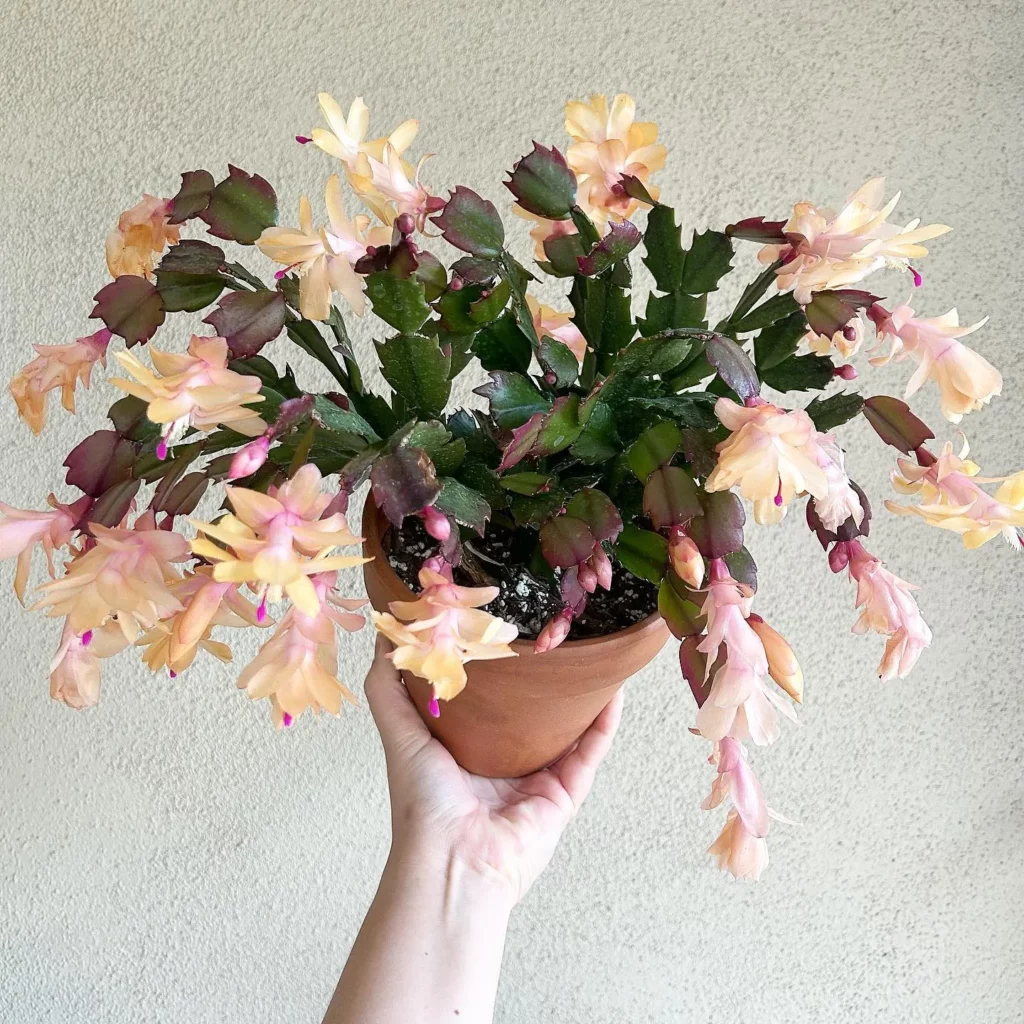
Root rot is a serious issue that can affect the health and survival of your Christmas cactus. This fungal disease occurs when the roots of the plant become infected and start to decay, leading to wilting, discoloration, and eventually, the death of the plant if left untreated. It is crucial to identify and address root rot promptly to save your prized Christmas cactus.
To recognize root rot in your Christmas cactus, look for the following signs:
- Wilting or drooping leaves, even when the soil is moist
- Yellowing or browning of the lower leaves
- A foul odor emanating from the soil
- Soft and mushy roots that appear brown or black
If you suspect root rot in your Christmas cactus, here are the steps to take for treatment:
- 1. Remove the affected plant from its pot: Carefully remove the Christmas cactus from its container, being gentle with the roots.
- 2. Inspect and trim infected roots: Examine the roots for signs of rot and trim off any brown or black, soft, and mushy roots. Use sterilized pruning shears to minimize the risk of spreading the disease.
- 3. Repot the plant: Choose a clean pot with good drainage and fill it with fresh, well-draining potting soil. Gently place the trimmed Christmas cactus roots into the new pot, ensuring they are spread out evenly. Avoid burying the stem too deeply.
- 4. Adjust watering: After repotting, allow the plant to dry out slightly between waterings. Overwatering is a common cause of root rot, so be cautious about watering the Christmas cactus.
- 5. Provide proper care: Place the repotted Christmas cactus in a location with bright, indirect light and maintain a moderate humidity level. Avoid exposing the plant to extreme temperatures or drafts.
- 6. Observe and monitor: Keep a close eye on the plant for any signs of improvement or further deterioration. Adjust the care routine as needed to promote recovery.
Managing Leaf Spot in Christmas Cactus

Leaf spot is a common fungal disease that can cause damage to the leaves of your Christmas cactus, affecting both its health and appearance.
However, with proper management techniques, you can prevent and control leaf spot, ensuring your plant stays vibrant and beautiful.
Recognizing leaf spot is the first step in managing the disease. Look for small, dark spots or lesions on the leaves of your Christmas cactus. These spots may have a yellow or brown halo around them.
As the disease progresses, the spots may increase in size and number, eventually causing extensive damage to the foliage.
To effectively manage leaf spot, it is crucial to practice good sanitation practices. Remove any infected leaves promptly to prevent the disease from spreading further.
Ensure you are using clean gardening tools and avoid splashing water onto the foliage, as excess moisture can contribute to the development of leaf spot.
Another key aspect of leaf spot management is utilizing targeted treatments. Fungicides specifically formulated for leaf spot can help control the disease.
Follow the instructions on the fungicide label carefully and apply it as recommended, ensuring full coverage of the affected leaves. Regularly monitor your Christmas cactus to evaluate the effectiveness of the treatment and make any necessary adjustments.
- Remove infected leaves promptly to prevent the spread of leaf spot.
- Practice good sanitation by using clean gardening tools.
- Avoid splashing water onto the foliage.
- Utilize targeted fungicide treatments for effective control.
- Ensure adequate air circulation and avoid overwatering.
Dealing with Stem Rot in Christmas Cactus
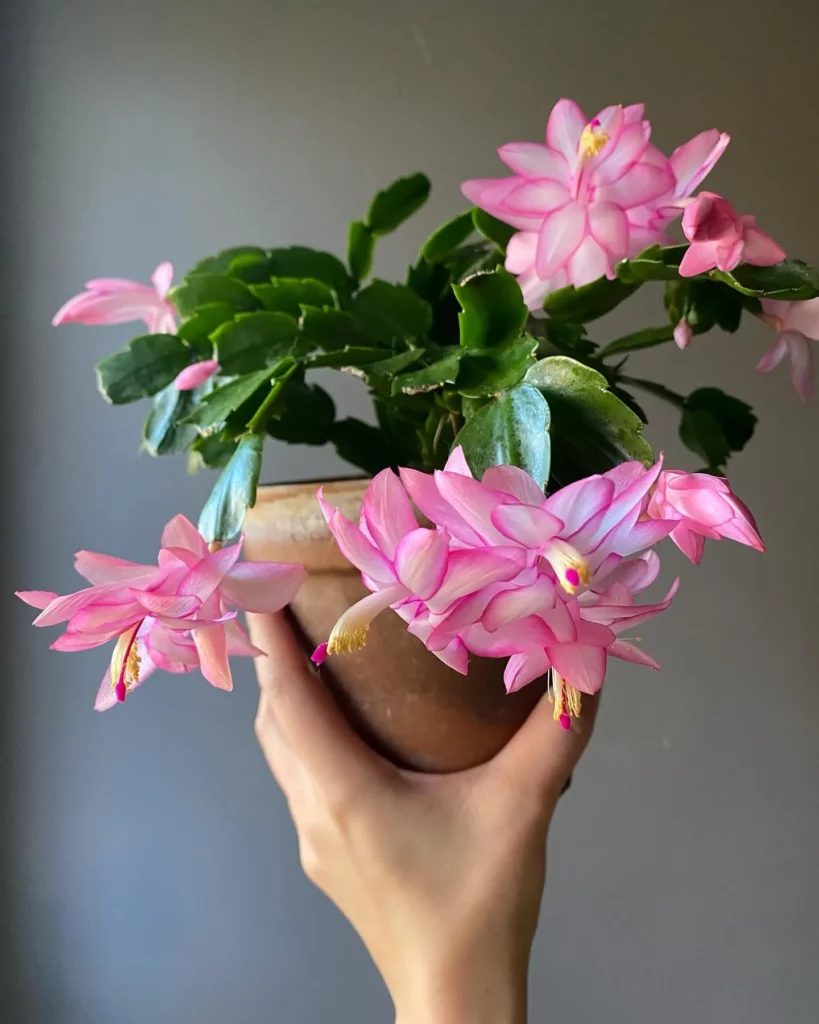
Stem rot is a bacterial disease that can wreak havoc on your Christmas cactus if left unchecked. This destructive condition can quickly spread and cause severe damage to the stems of your plant.
It’s crucial to learn how to identify and address stem rot to save your Christmas cactus from potential devastation.
So, how can you spot stem rot in your Christmas cactus? Look for black or dark brown, mushy spots on the stems. These can rapidly enlarge and give off a foul odor.
If you notice these symptoms, it’s essential to act quickly to prevent the disease from spreading further.
To combat stem rot, start by removing the affected parts of the plant. Using clean and sterilized pruning shears, carefully cut a few inches above the affected area. Make sure to dispose of the infected material properly, as it can harbor harmful bacteria.
Afterward, assess the watering regimen for your Christmas cactus. Overwatering is a common cause of stem rot. Ensure that the soil is well-draining and allow it to dry slightly between waterings.
Additionally, avoid splashing water on the stems and leaves during watering to minimize the risk of bacterial infections.
Lastly, adjust the environmental conditions to favor your Christmas cactus’s health. Provide adequate air circulation and maintain a temperature range of 60-70°F (15-21°C).
High humidity can contribute to the development of stem rot, so consider using a dehumidifier if necessary.
Key Points:
- Stem rot is a bacterial disease that can cause severe damage to Christmas cactus stems.
- Identify stem rot by black or dark brown, mushy spots on the stems.
- Remove affected parts using clean, sterilized pruning shears and dispose of them properly.
- Avoid overwatering and ensure well-draining soil.
- Maintain proper environmental conditions with adequate air circulation and temperature control.
Preventing and Treating Overwatering Issues in Christmas Cactus

Overwatering is a common problem for Christmas cacti owners, but with the right techniques, you can prevent and treat overwatering issues to ensure the health and longevity of your plant.
Overwatering can lead to root damage, fungal infections, and other detrimental effects on your Christmas cactus.
To prevent overwatering, it’s important to understand the watering needs of your Christmas cactus. These plants prefer slightly dry conditions and thrive in well-draining soil. Avoid watering your cactus too frequently, as this can lead to waterlogged roots and increased vulnerability to diseases.
Here are some preventive measures you can take to avoid overwatering:
- Check the moisture level of the soil before watering. Stick your finger about an inch deep into the soil, and if it feels dry, it’s time to water your plant.
- Use a well-draining soil mixture specifically formulated for cacti and succulents. This will help prevent water from getting trapped around the roots.
- Ensure that the pot has adequate drainage holes to allow excess water to escape. If necessary, repot your Christmas cactus into a container with better drainage capabilities.
- Water your cactus thoroughly but avoid soaking it. Allow the excess water to drain completely before returning the pot to its saucer or decorative container.
If you suspect that your Christmas cactus is already overwatered, here are some treatment options:
- Stop watering your plant immediately and allow the soil to dry out completely.
- Remove the cactus from its pot and inspect the roots. Trim away any mushy, black, or rotting roots using clean shears.
- Let the plant rest for a few days in a cool, dry place to allow the roots to recover.
- Repot the cactus into fresh, well-draining soil and resume a proper watering schedule.
Managing Underwatering and Drought Stress in Christmas Cactus

Underwatering and drought stress can be detrimental to your Christmas cactus, causing wilting and other issues. To ensure your plant stays hydrated and thriving, it’s crucial to recognize the signs of underwatering and implement proper watering techniques.
One key indicator of underwatering is the soil feeling dry to the touch. When the top inch of soil is dry, it’s time to water your Christmas cactus. However, avoid overwatering, as it can lead to root rot and other problems.
To properly water your Christmas cactus, give it a good soak until water drains out of the bottom of the pot. Allow the excess water to drain completely and ensure the pot has proper drainage holes.
Remember, it’s better to water less frequently but thoroughly than to water too often.
In addition to regular watering, you can also take steps to prevent drought stress. During hot or dry periods, mist the plant’s foliage with water to increase humidity.
Placing a tray of water near the plant can also help maintain moisture levels in the surrounding environment.
Pruning and Propagating Christmas Cactus for Disease Prevention

If you want to keep your Christmas cactus healthy and disease-free, pruning and propagating are essential practices to incorporate into your plant care routine. These techniques not only promote vigorous growth but also help in preventing diseases from taking hold.
Pruning your Christmas cactus involves removing any dead, damaged, or diseased stems or branches. By doing so, you can enhance the plant’s overall health and appearance while eliminating potential disease sources.
Use clean and sharp pruning shears to make clean cuts just above a segment joint. This encourages new growth and prevents any open wounds that could attract pests or pathogens.
Propagating your Christmas cactus is another effective way to prevent diseases and maintain the vitality of your plant. You can propagate by taking stem cuttings and placing them in a suitable growing medium, such as a well-draining potting mix.
These cuttings will develop roots and grow into new plants, which can then be separated and potted individually. By propagating, you can ensure the continuity of your Christmas cactus, while also minimizing the risk of diseases spreading from the parent plant.
During the propagating process, it is crucial to provide the newly propagated plants with proper care, including appropriate lighting, watering, and temperature conditions.
This will aid in their successful establishment and reduce the chances of disease development. Remember to monitor the moisture level in the growing medium and avoid overwatering, as excessive dampness can lead to root rot and other problems.
Common Mistakes to Avoid with Christmas Cactus Care

When it comes to caring for your Christmas cactus, avoiding common mistakes is crucial to ensure your plant stays healthy and vibrant throughout the holiday season.
By being aware of key factors such as lighting, temperature, and fertilization, you can provide the optimal conditions for your Christmas cactus to thrive.
1. Lighting:
One of the most common mistakes is placing your Christmas cactus in direct sunlight. While these plants enjoy bright light, direct sunlight can cause the leaves to scorch.
Instead, provide your Christmas cactus with indirect or filtered light for a few hours each day.
2. Temperature:
Another mistake to avoid is exposing your Christmas cactus to extreme temperatures. These plants prefer temperatures between 60°F and 70°F (15°C and 21°C).
Avoid placing them near drafty windows or heat sources, as sudden temperature fluctuations can stress the plant.
3. Fertilization:
Over-fertilizing or under-fertilizing your Christmas cactus can both be detrimental. Use a balanced houseplant fertilizer diluted to half the recommended strength and apply it every 2-4 weeks during the growing season.
However, refrain from fertilizing during the blooming period.
Expert Tips for a Happy and Healthy Christmas Cactus

When it comes to caring for your Christmas cactus, a little expert advice can go a long way. Follow these expert tips to ensure your Christmas cactus thrives and remains healthy all year round!
1. Feeding and Fertilization: Feed your Christmas cactus with a balanced, water-soluble fertilizer during the growing season, usually from spring to summer.
However, during fall and winter, reduce feeding to allow your plant to rest. Always follow the instructions on the fertilizer packaging and avoid over-fertilization, as it can cause damage to your plant.
2. Repotting: As your Christmas cactus grows, you may need to repot it to provide it with fresh soil and space for its roots to grow. Repotting is best done in the spring when your plant is actively growing.
Use a well-draining potting mix specifically designed for cacti and succulents. Be sure to choose a pot that is slightly larger than the current one to allow for growth.
3. Care Routine: Your Christmas cactus will thrive in bright but indirect light, so place it near a window with filtered sunlight. Maintain a consistently cool temperature between 60-70°F (15-21°C) and avoid exposing your plant to drafts or extreme temperatures.
Water your Christmas cactus when the top inch of soil feels dry, and always use room temperature water to prevent shock. Lastly, ensure good humidity levels by placing a tray of water near the plant or using a humidifier.
By following these expert tips, you can ensure that your Christmas cactus stays healthy, vibrant, and ready to bloom during the holiday season and beyond!
FAQ
Q: What are the most common pests that can infest Christmas cactus?
A: The most common pests that can infest Christmas cactus include aphids, mealybugs, and spider mites.
Q: How can I identify pest problems on my Christmas cactus?
A: Look out for signs such as sticky residue, discoloration, webbing, or small crawling insects on the plant or its leaves.
Q: What are some effective methods for treating pest infestations on Christmas cactus?
A: There are organic options, such as neem oil or insecticidal soaps, and chemical options available for treating pest infestations on Christmas cactus. In addition, you can try manual removal of pests or wiping the leaves with a damp cloth.
Q: How can I prevent diseases in my Christmas cactus?
A: To prevent diseases in your Christmas cactus, ensure proper watering techniques, provide adequate light and ventilation, and avoid over-fertilizing. It’s also crucial to maintain cleanliness and avoid overcrowding your plants.
Q: How do I identify and treat root rot in my Christmas cactus?
A: Signs of root rot in a Christmas cactus include wilting, yellowing or browning of leaves, and a foul odor. To treat root rot, remove infected parts, replant in fresh well-draining soil, and adjust watering practices.
Q: What is leaf spot and how can I manage it in my Christmas cactus?
A: Leaf spot is a fungal disease that causes dark spots or lesions on the leaves of the Christmas cactus. To manage leaf spot, maintain proper humidity levels, avoid overwatering, and remove any infected leaves or debris.
Q: How can I deal with stem rot in my Christmas cactus?
A: Stem rot is a bacterial disease characterized by dark, mushy stems. To address stem rot, remove infected parts, improve airflow around the plant, and avoid overwatering. Applying a copper-based fungicide may also help.
Q: What should I do to prevent overwatering issues in my Christmas cactus?
A: To prevent overwatering issues, allow the soil to dry out between waterings and ensure proper drainage. Avoid leaving the plant in standing water and use a well-draining potting mix.
Q: How do I manage underwatering and drought stress in my Christmas cactus?
A: To manage underwatering and drought stress, water your Christmas cactus thoroughly when the top inch of soil feels dry. Avoid letting the plant sit in excess water and provide adequate humidity.
Q: Can pruning and propagating help prevent diseases in my Christmas cactus?
A: Yes, pruning and propagating can help prevent diseases in your Christmas cactus. By removing infected parts, you can prevent the spread of diseases. Additionally, propagating healthy cuttings can give you new disease-free plants.
Q: What are some common mistakes to avoid when caring for a Christmas cactus?
A: Common mistakes to avoid include overwatering, exposing the plant to direct sunlight, using incorrect potting soil, and neglecting to provide enough humidity. It’s also important to avoid drastic temperature changes and over-fertilizing.
Q: What are some expert tips for caring for a Christmas cactus?
A: Some expert tips include providing indirect bright light, maintaining temperatures between 60-70°F (15-21°C), using a well-draining potting mix, and fertilizing monthly during the growing season. It’s also helpful to provide a rest period with reduced watering after blooming.

